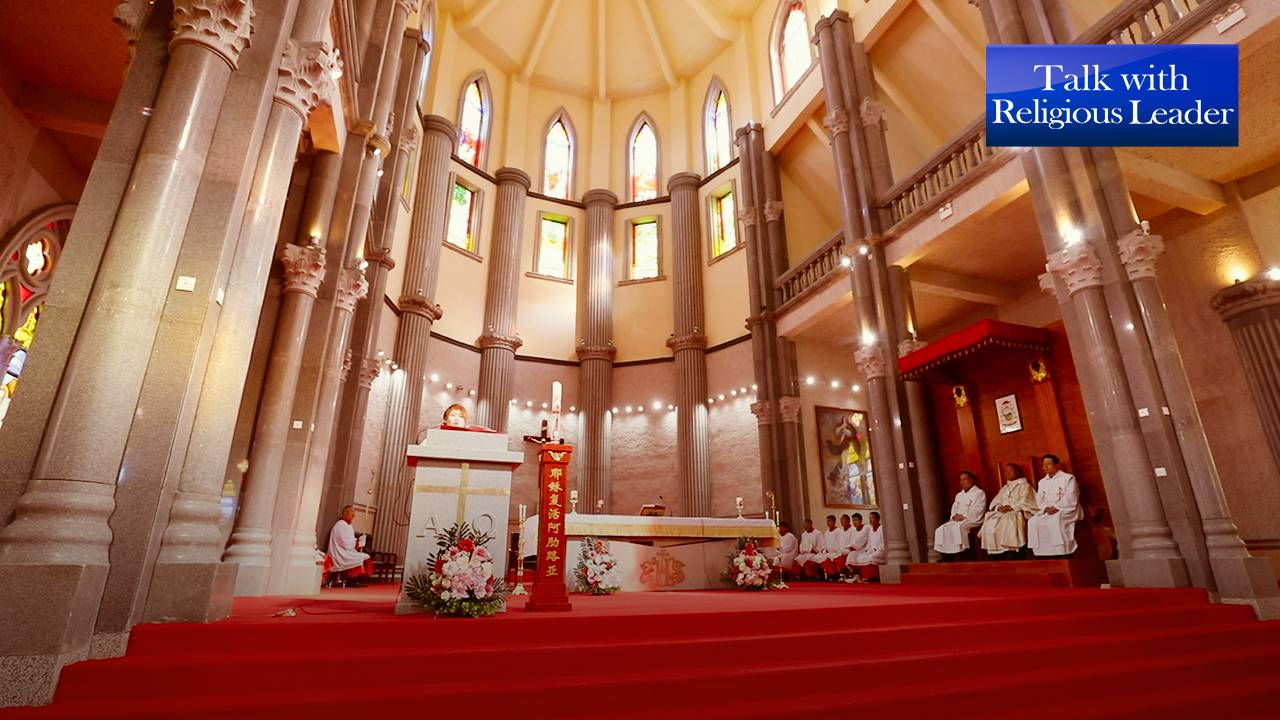
Culture
20:19, 13-May-2019
Catholics in Chengde discuss importance of community
Updated
14:24, 16-May-2019
By Cui Hui'ao, You Siyuan
02:44

Religion can serve as a source of collaboration among different communities. In modern-day China, religion goes beyond rigid, personal beliefs. And even though less than five percent of Chinese are Christian, one branch of Christianity is alive and well in the country and changing with the times.
Sacramental bread, a symbol of Jesus's sacrifice.
Hundreds of Catholics are receiving holy eucharist from Guo Jincai, the bishop at the cathedral in Chengde, a city about 2.5 hours' drive from Beijing, in Hebei Province.
For Guo, Catholicism is ultimately about sacrificing oneself and loving others.
"The Bible's message for us is to love God and his people, and be the salt of the earth and light of the world. The extension of love is service, serving and making contributions to your country and to mankind," said Guo.
Guo said in modern times, Catholicism is actively adapting to change, integrating more with society. New interpretations of biblical words have encouraged followers like Zhao Yujie to get over what used to be seen as taboo.
The 43-year-old comes from a traditional Catholic family. She attends mass every day, listening to powerful messages from the Father, and also singing and praying. She said her parents always wanted her to marry a Catholic man. But her decision to marry a Muslim man was supported by her priest.

Bishop Guo Jincai speaks with CGTN reporter at a Catholic Church in Chengde, north China's Hebei Province. /CGTN Photo
Bishop Guo Jincai speaks with CGTN reporter at a Catholic Church in Chengde, north China's Hebei Province. /CGTN Photo
"As Father told me, love is about respect, respecting each other's beliefs. We love each other, so we got married. Now we go to each other's ceremonies together. For example, I sometimes go to mosque with him for certain events and he comes with me to attend masses," said Zhao.
Another Catholic, Zhu Yannan, told CGTN that his wife is not religious. "But she came with me to help out at the church. Over time she saw that faith could actually help one through difficult moments and she now comes to masses too."
Here in Chengde, Buddhism and Taoism remain the most popular religions. But Catholicism also has its place. The Chengde Roman Catholic Diocese – one of the 98 across China – has roughly 25,000 followers. It's a small but stable number.
Ten years ago, Guo said there was little cross-over among different religions in Chengde. But over time mutual respect has led to more open interactions among them.
For example, masters of Buddhism, Taoism, Islam and Christianity now regularly convene at the bishop's house, exchanging views on theology and how to collaboratively do good work for society.
"One example is different religious groups are all partaking in philanthropy work in southwest China's Guizhou Province. We Catholics fund local schools and hospitals with money from followers' donations. Other religions are contributing in their ways," said Guo.
Guo said despite differences in scriptures and belief systems, religions share one common goal: to help people. As long as people have that vision in mind, confrontation and disputes can be avoided.

SITEMAP
Copyright © 2018 CGTN. Beijing ICP prepared NO.16065310-3
Copyright © 2018 CGTN. Beijing ICP prepared NO.16065310-3